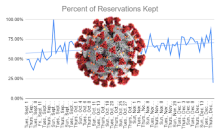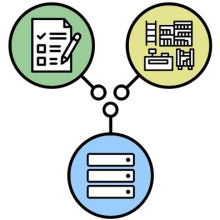Mark A Chaffee
Posts tagged with COVID-19 in Blog Tiny Studies
Showing 1 - 5 of 5 items

The interruption to library services caused by COVID-19 meant we needed to quickly develop new data collection strategies to give us information to manage our modified services for the 2020-2021 academic year. It also gave us an opportunity to conduct a deep reflection and assessment of how our regular collection had been going, and to be ready to make changes as we reinstituted more regular services. In two posts, we describe the evolution of our data collection efforts.

When the pandemic quickly shut down our libraries' physical spaces, in-person services, and access to many of our physical resources, the Library didn’t know when we might reopen to campus. Over the last 16 months members of the Library Environments department collaborated with Facilities and department managers and colleagues to design, create, and evaluate our pandemic-based changes to physical spaces, workflows, and onsite services.

How does one get valid data without traumatizing or alienating students and faculty in a trying time? According to this author, by taking an empathetic approach to planning and implementing an assessment project, you can minimize negative impacts to your community.

This blog post presents how the use of multiple streams of data benefited two recent U-M Library studies. For example, one recent study merged survey data, U-M human resources data, and Library document delivery data to provide a very rich picture of how diverse groups on campus use and experience the Library’s document delivery service. Some advantages of joining multiple data sources in assessment projects are discussed in the context of the two example studies.
